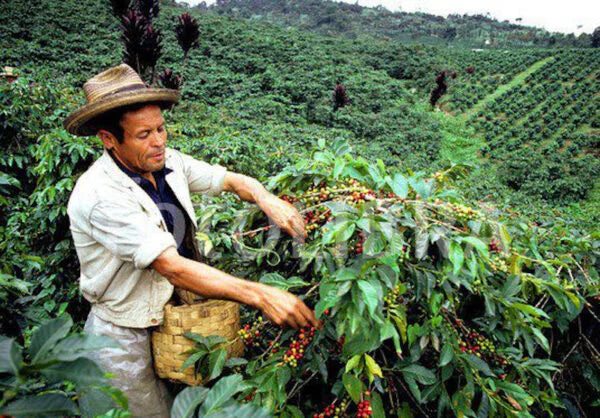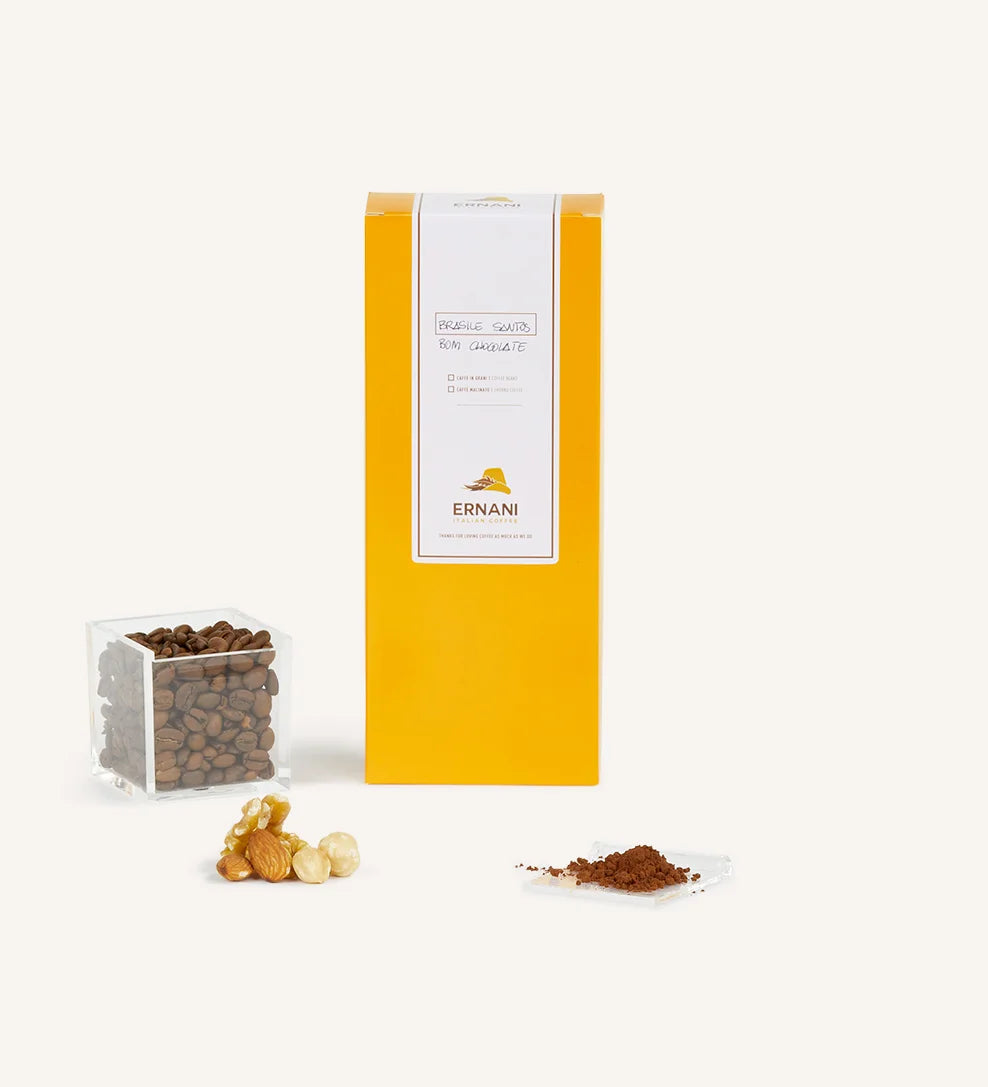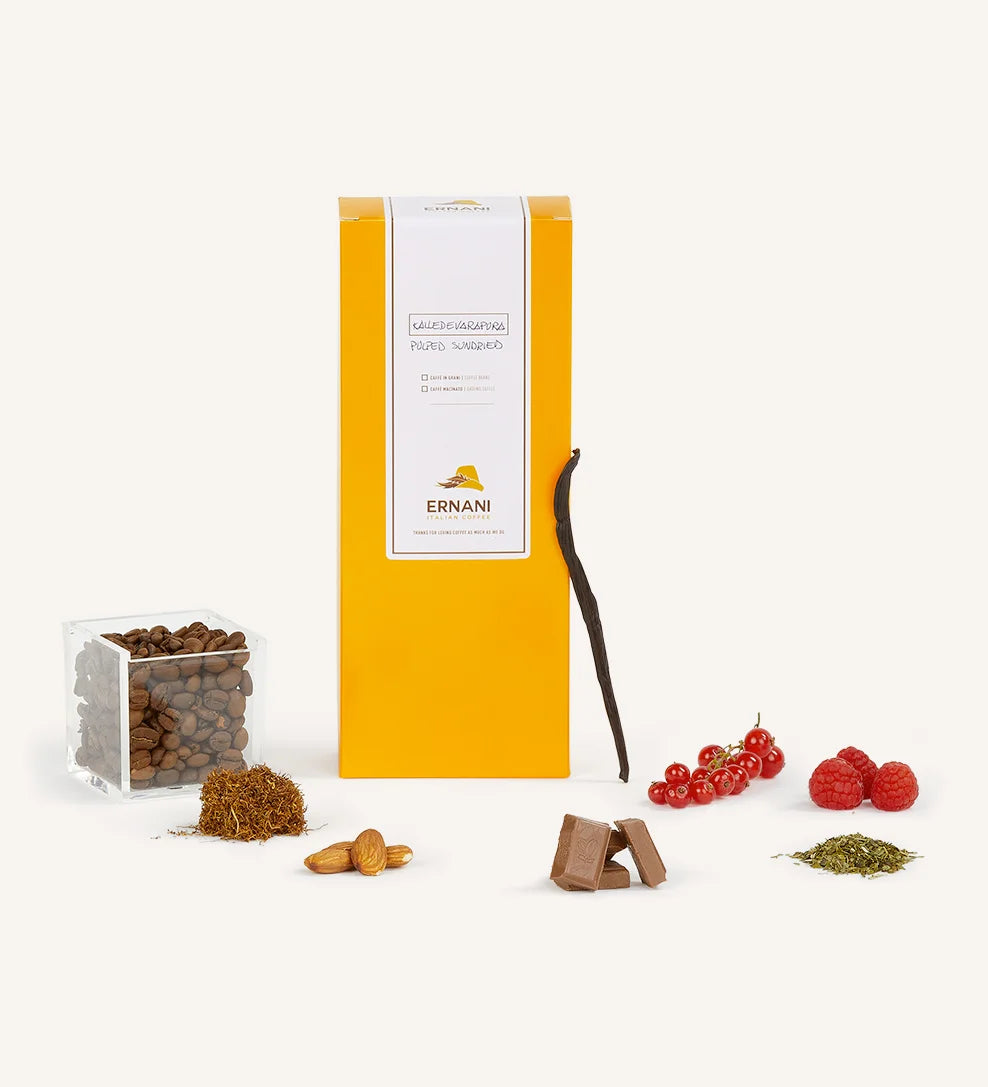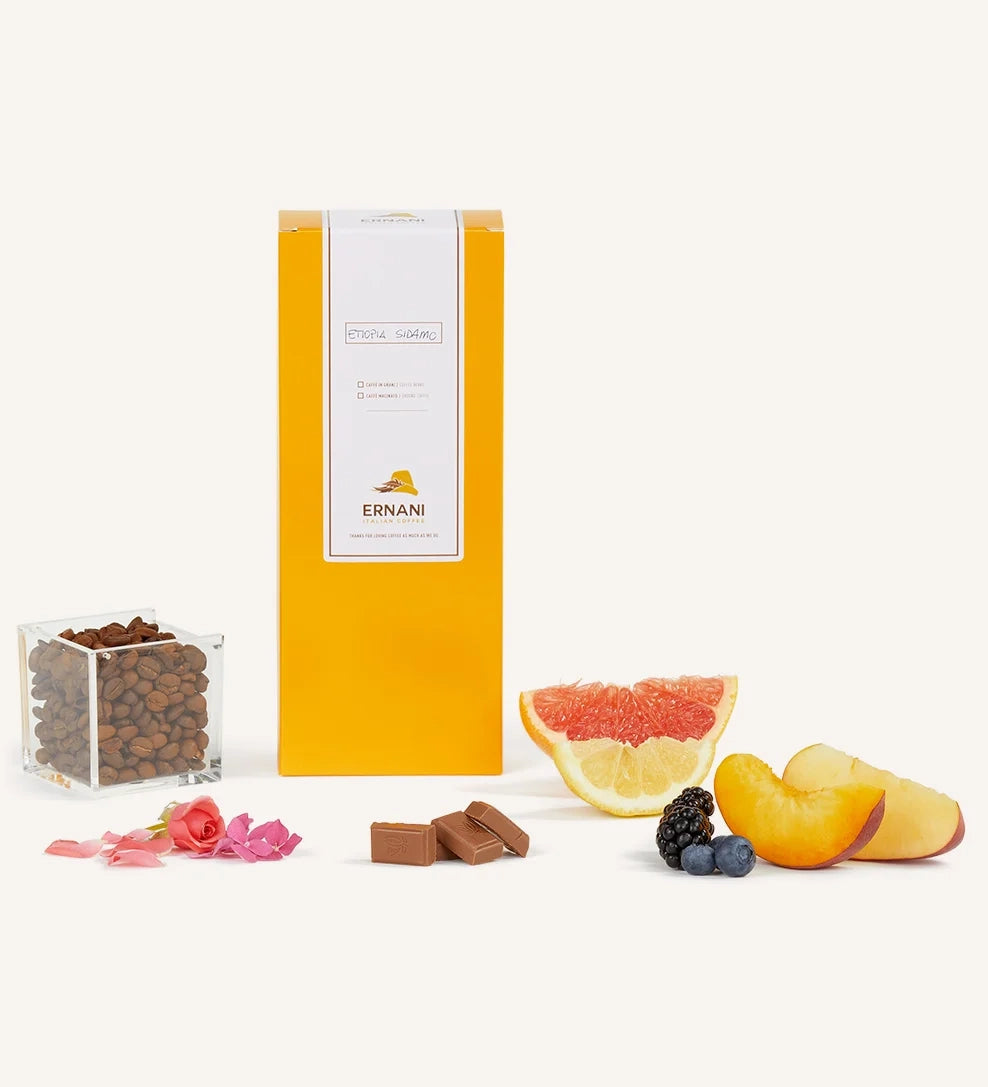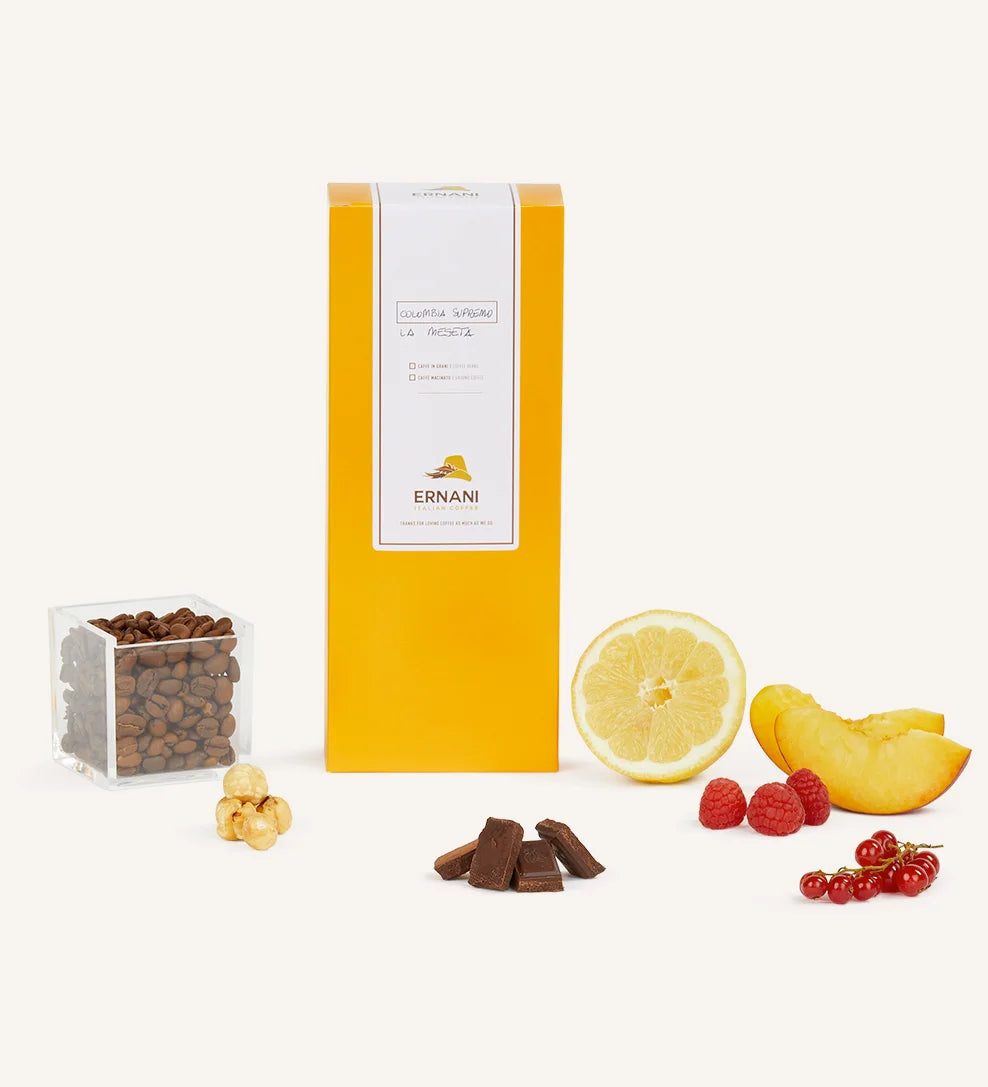
Colombia Finca la Meseta - 250g
Save up to 10% by choosing periodic delivery
Description
A single origin coffee balanced between the acidity of citrus fruits and the sweetness of ripe fruit and nuts.
The Colombia Supremo Finca la Meseta single origin is a gourmet Arabica coffee, grown at an altitude of around 1,000 metres above sea level.
This small plantation, located in the Medellin region of Colombia, takes great care in every step of the process, from cultivation to harvesting and processing. The fruits are harvested using the picking method, manually selecting only the cherries that are perfectly ripe.
They are then processed using the washed method, which gives the extracted coffee a fresh note.
- On the nose: releases aromas of cocoa and ripe fruit.
- Taste: the sweetness of plum and blackberry is immediately apparent, together with the intensity of chocolate. If left to cool slightly, the citric acidity reminiscent of lemon peel is enhanced.
Ernani's advice: for espresso, use a dose of 8.5 g per dose.
Suitable for
For those looking for a sweet, soft and fresh single origin, balanced by a light bitterness
Technical data sheet
- Aromatic notes: ripe fruit and red berries, dark chocolate and hazelnuts, lemon
- Intensity: 6.5/9
- Body: 5/9
- Sweetness: 4/9
- Bitterness: 4/9
- Acidity: 6.5/9
- Aromatic intensity: 8/9
- Roasting: medium
- Suitable for: Those looking for a sweet, soft and fresh single origin, balanced by a light bitterness
- Origins: Colombia
- Location: Medellin Region, “Finca la Meseta” plantation
- Altitude: 1000m above sea level
- Harvest type: picking
- Type of processing: washed
- Variety: Arabica
- Expert rating: 78/100
Thanks to the medium roast, the carefully selected raw coffee beans can express themselves to their fullest, releasing all their natural aromas without ever being overly bitter. Try it without sugar, it's incredible!
The coffee is stored inside a sealed bag, self-protected with a one-way valve, which allows the coffee to degas, preventing oxygen from entering, which would otherwise oxidize it. This keeps the coffee fresh and aromatic even after several months.
Notes for the 1kg grain pack:
- Roasted coffee beans
- 1000 g net weight
- Packaged with one-way valve
Notes for the 250g grain pack:
- Roasted coffee beans
- Packaged in a protective atmosphere of food-grade nitrogen with a one-way valve
- 250 g net weight
Notes for the 250g ground pack:
- Coffee beans roasted and then ground
- Packaged in a protective atmosphere of food-grade nitrogen with a one-way valve
- 250 g net weight
History of coffee
Today we travel to Colombia, one of the most evocative coffee-growing regions in the world, so much so that its landscapes are a UNESCO World Heritage Site.
Coffee-growing areas
The coffee-growing areas are called Paisa or Eje Cafetero: rural areas that extend across several departments towards the south of the state, beyond Medellin. The best known are:
- Caldas
- Quindio
- Risaralda
- Tolima
- Cauca Valley
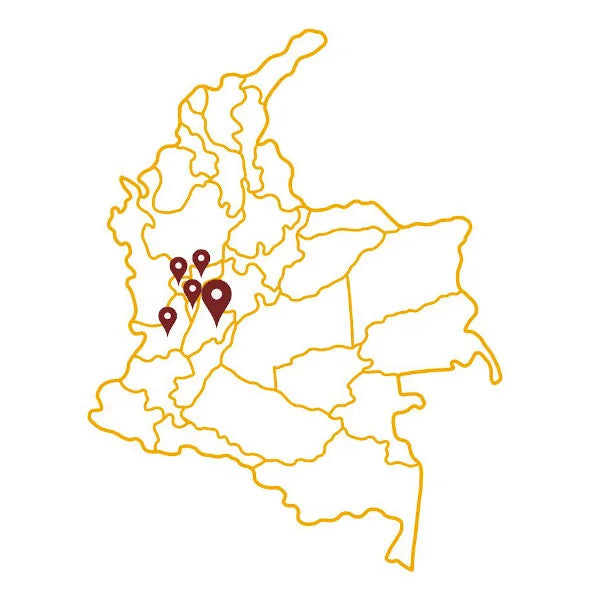
Arrival of coffee in Colombia
Eje Cafetero, with its perfect climate, was colonized by the Paisas in the 19th century, during the Colonización Antioqueña.
It reads:
"This is a cultural landscape that combines natural, economic, and cultural elements with a high degree of regional heterogeneity, making it an exceptional case in the world. This landscape combines the human, family, and generational efforts of coffee producers with the ongoing support of the institutions."
Here, life flows slowly, in contact with and respect for nature, made of simplicity and centuries-old cultural traditions.
Coffee has influenced the economy, lifestyle, traditions, habits and customs of the small historic villages of growers, who pass down knowledge and skills from father to son.
Initially, people rejected coffee because it takes about five years to produce the first fruitful harvest, but by 1999, revenues already accounted for 3.7% of GDP and 37% of agricultural employment.
Their traditional drink consists of a fabric filter extraction, in which the ground coffee undergoes several passes of hot water, to be served in a large, steaming cup.
When I drink a cup of Colombia Supremo Finca la Meseta, I imagine myself among the beautiful thermal areas, immersed in vast plantations of an intense emerald green, embraced by cloud forests, among steep valleys and glaciated peaks, kissed by the sun and overlooking the National Parks of the Andes.
Here is the hacienda from which we buy our Colombian coffee, from the Finca called La Meseta, which is located south of Medellin in the department of Caldas or Chinchina.
Plantation located between 1000 and 1500 meters above sea level, which produces high-quality and specialty coffee, with brands such as Organic, Biologico and Rainforest Alliance, very important for us to be sure that our coffees are also sustainable.
And to honor their product, the recognedores, or pickers of the red berries, always work by hand, making a careful selection and selecting only the perfectly ripe cherries.
The coffee grown is mostly Arabica, of 5 varieties in particular: Maragogipe, Bourbon, Castillo, Caturra and Typica.
The diverse soil conditions, the forest and botanical diversity, the climate, and the growers' extensive knowledge and expertise create the conditions for producing excellent coffee with an intense yet smooth flavor, boasting a wide aromatic spectrum, including notes of chocolate, almond, fruit, and flowers.
Advice
To best savor these lands, I recommend trying espresso or filter coffee, especially using an Aeropress!
Make it in espresso!.
Prepare it in a filter!
Have a good trip!
Curiosity!
The best time to travel to Colombian plantations is between April and May, or between October and December.
One of Colombia's strengths has been recognizing the value of marketing and the importance of building a recognizable brand. Thus, in 1958, Juan Valdez was born, the farmer who represents Colombian coffee: a highly successful icon, accompanied by his mule Conchita while carrying sacks full of coffee beans, the symbol of Colombian coffee. A folkloric image that immediately conveys the atmosphere and sensations associated with these prized beans.
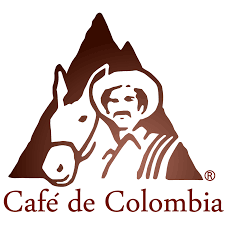
Around the same time, marketing phrases like “Mountain Grown Coffee” emerged, and the constant promotion of 100% Colombian coffee helped Colombia stand out in the minds of consumers around the world.

